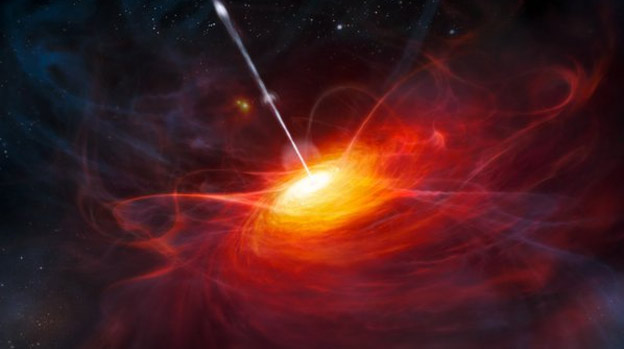-
The LQG
No doubt that the Himiko Cloud is truly huge—like, a large portion of our universe. there is a structure in the space that breaks the modern astronomy laws. This structure, my companions, is the Large Quasar Group or we can write as LQG. Our universe, the Milky Way, is just a one hundred thousand light years across. Consider that for a minute; if something occurs on the most distant side of the cosmic system, the light would take a hundred thousand years to achieve the contrary end. That implies that when we watch an occasion happen at the opposite end of our cosmic system, it really happened when the human species was simply originating.
Presently, take that time, and increase it by forty thousand. Believe it or not—the Large Quasar Group is about four billion light-years across. The group of seventy-four quasars really defies the standard astronomy, since the greatest size of any inestimable structure should be around just 1.2 billion light-years across. Scientists have no clue how this colossal structure shaped, since they knew about different other clusters of maybe a few hundred million light-years away. The enormous structure completely spits on a specific physical law, which expresses that when seen from a distance, the universe would look uniform. This is actually the sort of deigning astronomical structure that looks over at our system and, with a grin, says “charming.”
-
The Castor System
As though a couple of giant red hot bundles of gas weren’t sufficient, here we introduce the Castor System. As one of the two brilliant stars from the Gemini heavenly body in our night sky, it has some genuine radiance. This is on the grounds that the Castor System isn’t one, or two, however, six stars, all circling around a central common mass. Three binary star frameworks orbit each other with two hot and splendid A-Type stars being stuck in the framework, and in addition four M-type red dwarves. Altogether, however, these six stars put out generally 52.4 times more luminescence than that of our sun.
-
Sagittarius B2
Throughout a previous couple of years, researchers have been considering a dust cloud close to the centre of our galaxy “Milky Way”. It appears that God chose to get imaginative—this residue cloud, named Sagittarius B2, taste likes raspberries and smells like rum. The gas cloud is referred to comprise generally of ethyl formate, which usually gives a taste to raspberries and smell to rum. This huge cloud is said to contain a billion liters of the stuff—which would be extraordinary in the event that it wasn’t rendered undrinkable by irritating particles like propyl cyanide. The creation and appropriation of these more complicated atoms is a riddle to researchers, however, so we won’t open up an intergalactic bar at any point in the near future.
-
The Planet Gliese
Researchers have confirmed that this hell of a planet named, Gliese 581 c is the possibility for future colonization; in spite of the reality the whole planets out to get you. This planet orbits around a red small star, ordinarily littler than our Sun, with a luminosity of just 1.3% of our sun. This implies the planet is far nearer to its star than we are to the sun. That’s because, it is stuck in a condition of tidal locking, implying that one side of the planet is continually confronting the star, and one side is continually confronting away—simply like our moon’s association with Earth.
The tidal locking of the planet comes out in some entirely odd features. If we see the star side of the planet it would melt you immediately and the other side would freeze you because there would be no heat coming from the sun. In any case, in the middle of these two limits is a little belt where life could hypothetically exist. Though life on Gliese 581 c would have its difficulties. The star which it orbits around is a Red Dwarf, which implies that its frequency is lower at the visible spectrum showering the whole sky of Gliese 581 c in terrible red shading. Another reaction of this is the way that photosynthesizing plants would need to adjust to the constant exposure of infrared radiation, which would give them a black color. That Greek plate of mixed greens wouldn’t appear to be so tantalizing any more.















